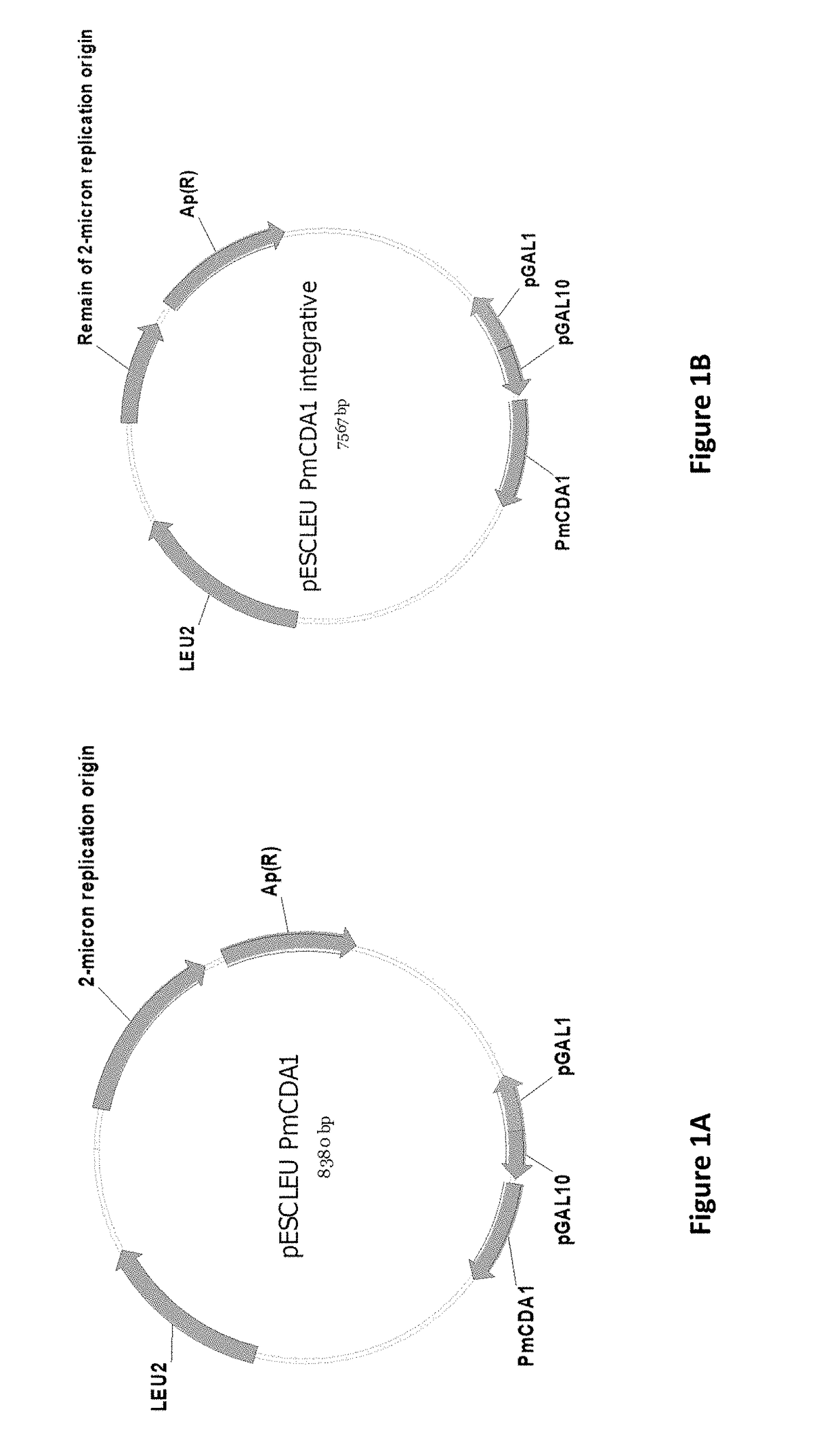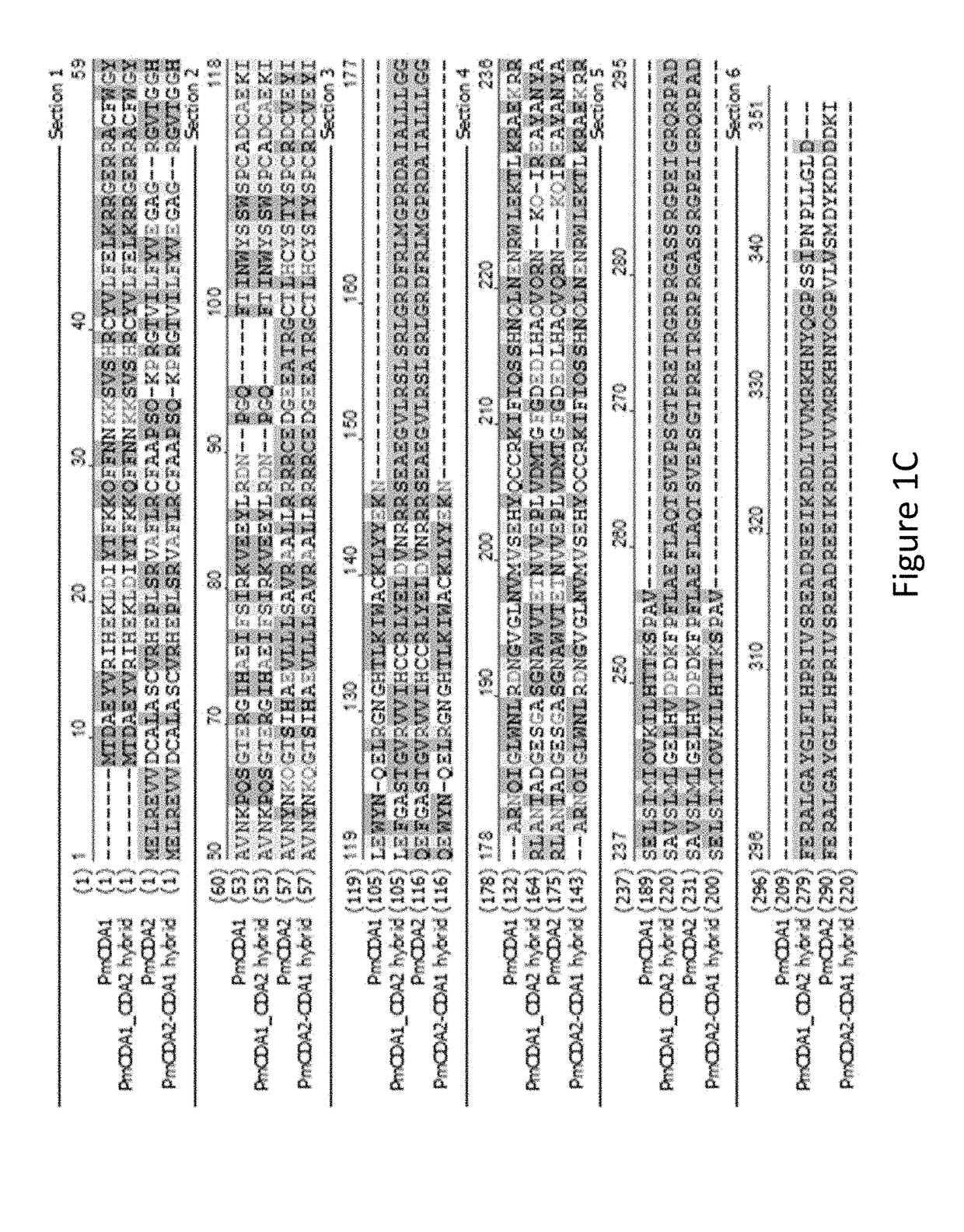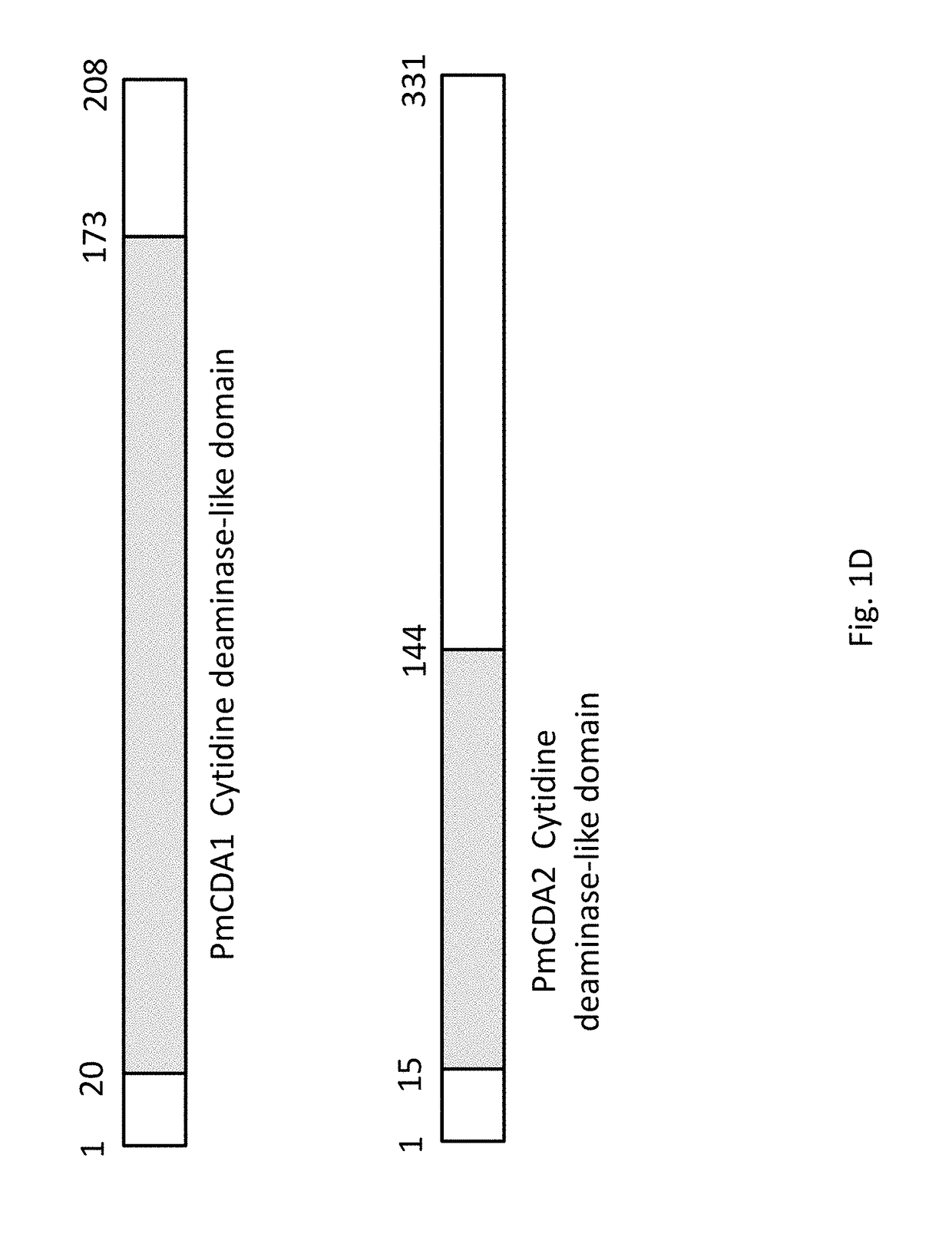Composition and method for diversifying polypeptide libraries
a polypeptide library and polypeptide technology, applied in the field of polypeptide library diversification and maturation, can solve the problems of limiting the use of antibody maturation, time-consuming and laborious development of antibodies as research reagents and therapeutics with high affinity and specificity, and intrinsically not being able to mature affinity
- Summary
- Abstract
- Description
- Claims
- Application Information
AI Technical Summary
Benefits of technology
Problems solved by technology
Method used
Image
Examples
example 1
[0094]Isolation of VHH Antibody Clones from a Naïve VHH Antibody Library
[0095]In accordance with the present invention, compositions and methods are provided for diversification of a polypeptide library and isolation of binders from a diversified polypeptide library to a target of interest. It has previously been demonstrated that the overexpression of sea lamprey CDA1 can cause mutations in yeast strains defective in Uracil DNA-glycosylase (UNG1 mutant) (MAYOROV et al. 2005b) and FIG. 3A. In addition, 6-N-hydroxylaminopurine (HAP) causes substitution mutations in yeast HAM1 mutant strains (NOSKOV et al. 1996) and FIG. 3B. Thus, overexpression of sea lamprey CDA1 in yeast ung1 mutants or the presence of the HAP mutagen in yeast HAM1 mutants either alone or in combination can serve as mutation causing factors for diversifying genes encoding polypeptides of significance.
[0096]Using prior art, mRNA from camelid blood leukocytes have been isolated, converted into cDNA and DNA regions en...
example 2
[0098]DNA Sequence Analysis of Isolated VHH Antibody Clones
[0099]Total plasmid DNA from a pool of FACS-sorted yeast cells was isolated and VHH encoding genes were PCR amplified for subsequent recloning into the pET22 (b) expression vector and the resulting individual E. coli clones were analyzed for anti-influenza H5N1 neuraminidase (“N1 NA”) activity. Protein expression was induced using autoinduction media as described (STUDIER 2005) and cell shockate was subjected to direct ELISA for binding to N1-NA. VHH from candidate positive clones were purified using Ni-NTA resins and the activity with N1-NA was confirmed by direct ELISA. Eighteen VHH antibodies that are reactive to H5N1 NA were isolated and sequenced. Sequence alignment (FIG. 6) showed not only the diversity of these clones, but also that several clones likely originated from one parent VHH via mutation. For example, clones 27-11 and 27-8 differ by only in 1 amino acid in CDR3.
example 3
[0100]Purification and Characterization of Isolated VHH Antibodies
[0101]The periplasmic expression and protein purification of recombinant FLAG-His6-tagged VHH was performed as described (CONRATH et al. 2001). The purity of the proteins was confirmed by SDS-PAGE (FIG. 7). The protein concentration was determined spectrophotometrically at 280 nm using the computed extinction coefficient of each VHH.
[0102]A DNA construct was cloned to generate the bivalent proteins VHH1-LH-VHH2 tailed by Flag-tag and 6×HIS tag. “LH” stands for “long hinge” and is the structural upper hinge of the llama IgG2, AHHSEDPSSKAPKAPMA SEQ ID NO. 15 (Vu et al. 1997). The N-terminal antibody fragment was cloned in frame with the pelB signal sequence for potential periplasmic localization. VHH proteins were expressed and purified using Ni-NTA resins as described previously (CONRATH et al. 2001). FIG. 7 presents the purified monovalent (VHHm) and bivalent (VHHb) antibodies.
[0103]Table 2 presents the ELISA data of ...
PUM
| Property | Measurement | Unit |
|---|---|---|
| Fraction | aaaaa | aaaaa |
| Fraction | aaaaa | aaaaa |
| Volume | aaaaa | aaaaa |
Abstract
Description
Claims
Application Information
 Login to View More
Login to View More - R&D
- Intellectual Property
- Life Sciences
- Materials
- Tech Scout
- Unparalleled Data Quality
- Higher Quality Content
- 60% Fewer Hallucinations
Browse by: Latest US Patents, China's latest patents, Technical Efficacy Thesaurus, Application Domain, Technology Topic, Popular Technical Reports.
© 2025 PatSnap. All rights reserved.Legal|Privacy policy|Modern Slavery Act Transparency Statement|Sitemap|About US| Contact US: help@patsnap.com



